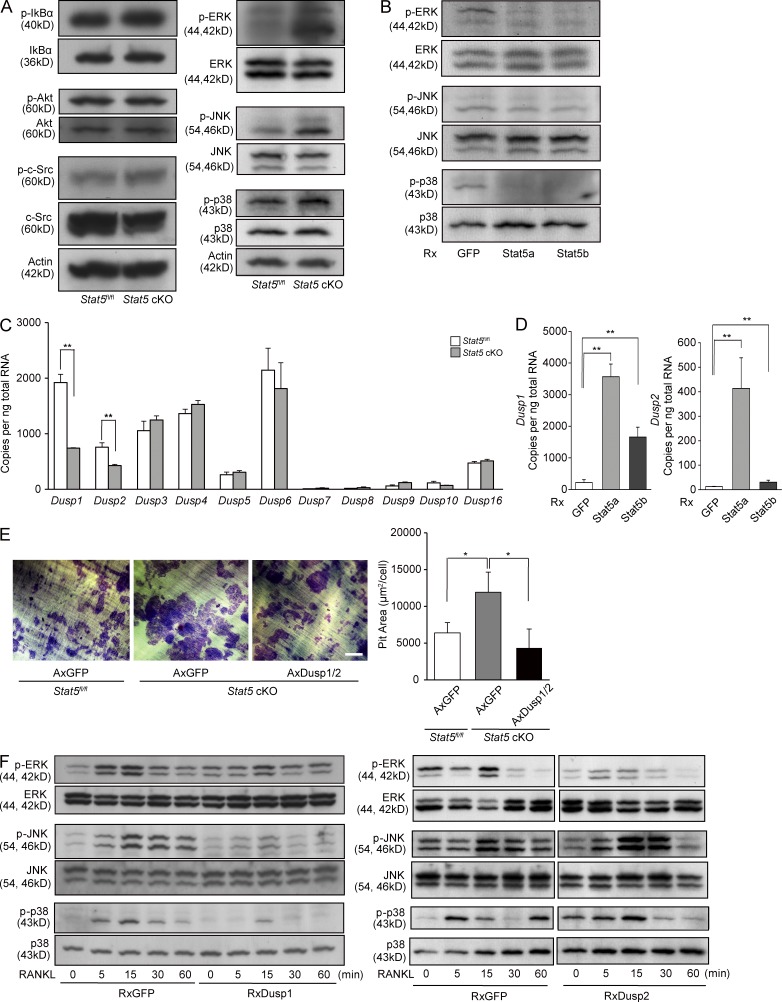Figure 4.
Stat5 negatively regulates the activity of MAPKs through the expression of Dusp1 and Dusp2. (A) Whole-cell lysates from Stat5fl/fl and Stat5 cKO osteoclasts were subjected to Western blotting using antibodies against phospho-IκBα, phospho-Akt, phospho–c-Src, phospho-ERK1/2, phospho-JNK, and phopsho-p38. (B) Total cell lysates from WT osteoclasts retrovirally overexpressing Stat5a and Stat5b were analyzed by Western blotting using antibodies against phospho-ERK1/2, phospho-JNK, and phospho-p38. (C) Total RNA was extracted from Stat5fl/fl and Stat5 cKO osteoclasts, and the expression of Dusp1, Dusp2, Dusp3, Dusp4, Dusp5, Dusp6, Dusp7, Dusp8, Dusp9, Dusp10, and Dusp16 was analyzed by quantitative real-time PCR. Data are represented as the mean ± SD (**, P < 0.01; n = 3). (D) Total RNA was prepared from osteoclasts retrovirally overexpressing GFP, Stat5a, or Stat5b, and the expression of Dusp1 and Dusp2 was analyzed by quantitative real-time PCR. Data are represented as the mean ± SD (**, P < 0.01; n = 3). (E) Bone-resorbing activity of Stat5fl/fl (AxGFP) and Stat5 cKO osteoclasts adenovirally transfected with AxGFP and AxDusp1/2 was analyzed by pit formation assay. Representative resorption pits, visualized by toluidine blue staining, are also shown. Graph shows pit resorption area per osteoclast. Data are representative of three independent experiments (*, P < 0.05; n = 3). Bar, 100 µm. (F) Phosphorylation of ERK1/2, JNK, and p38 after RANKL stimulation in WT osteoclasts retrovirally overexpressing Dusp1 or Dusp2 was analyzed by Western blotting. Results are representative of two (A, B, E, and F) or three (C and D) independent experiments.

